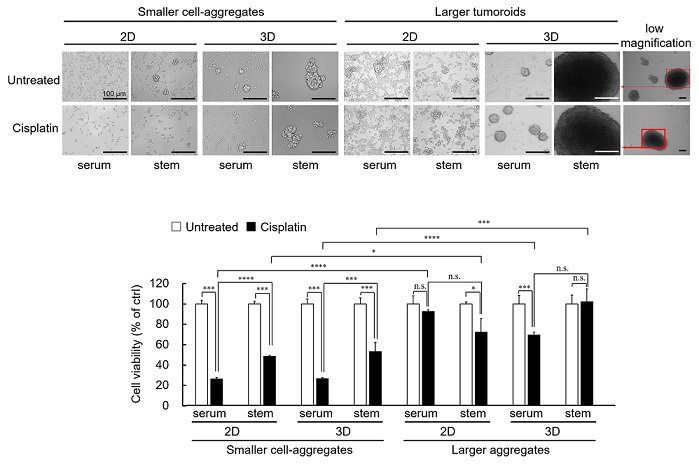Researchers have developed and used several three-dimensional (3D) culture systems, including spheroids, organoids, and tumoroids. Drug resistance is a crucial issue involving recurrence in cancer patients. Many studies on anticancer drugs have been done in 2D culture systems, where-as 3D cultured tumoroids have many advantages for assessing drug sensitivity and resistance. Here, we aim to investigate whether Cisplatin (a DNA crosslinker), Imatinib (a multiple tyro-sine kinase inhibitor), and 5-Fluorouracil (5-FU: an antimetabolite) alter tumoroid growth of metastatic colorectal cancer (mCRC). To establish a liquid-based 3D multiplexing reporter assay system, LuM1 (a murine mCRC cell line) was stably transfected with the Mmp9 promoter-driven ZsGreen reporter gene, which was designated as LuM1/m9 cells and cultured in NanoCulture Plate (NCP), a 3D culture device. The larger tumoroids were not sensitive to Cisplatin and ex-pressed ABCG2 (a marker of cancer stem cells, a.k.a. a drug efflux transporter), whereas smaller cell-aggregates were more sensitive to Cisplatin. Both Imatinib and Cisplatin significantly in-creased tumoroid growth (larger than 300 μm2) and Mmp9 promoter activity and were not cytotoxic to the mCRC tumoroids. On the other hand, 5-FU was cytotoxic to the tumoroids and significantly inhibited tumoroid growth, although not completely. Thus, platinum resistance and imatinib resistance in mCRC were modeled using the liquid-based 3D cultured tumoroid system. The tumoroid culture is useful and easily accessible for the assessment of drug sensitivity and resistance.

